Golang实现微信公众号后台接入的示例代码
目录
- 一、开发前准备
- 1、注册微信公众号
- 2、服务器配置
- 二、代码编写
- 三、测试
- 四、总结
最近在学习golang,写了个微信公众号项目练练手。
一、开发前准备
1、注册微信公众号
百度搜索微信公众号进入官网,注册一个订阅号,其他信息按要求填写即可。
注册完成后进入个人公众号主页,下拉至设置与开发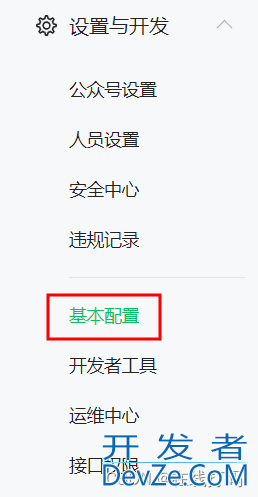
点击基本配置,查看AppID和AppSecret(之后进行代码开发会用到)。
2、服务器配置
然后进行服务器配置,由于是本地开发,为了方便调试,可以暂时使用内网穿透工具ngork映射公网地址,具体的使用方法网上都有,在此就不多赘述。
下载完成后是一个可执行文件

在当前目录打开命令行窗口输入命令启动ngork
ngork.exe http 80
将本地80端口映射到公网地址
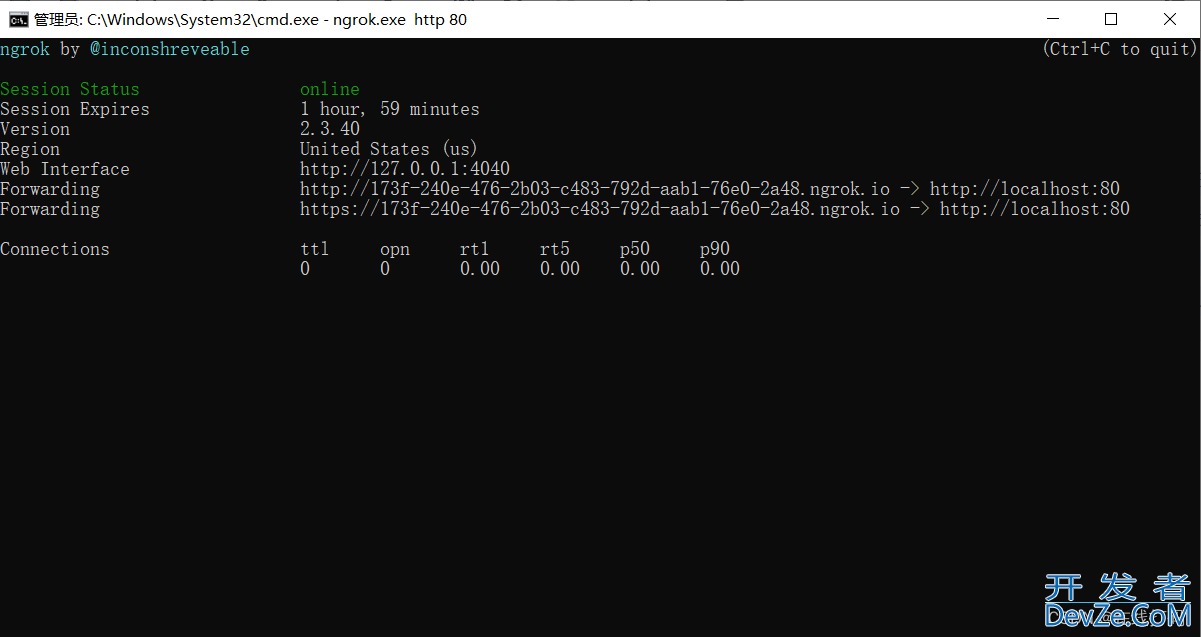
将映射的公网地址填入服务器URL,令牌Token填写一个自定义的字符串(之后进行代码编写时会用到),然后使用明文模式。
至此基本配置完成,接下来就是代码开发。二、代码编写
使用Golang的http包创建一个web服务器
package main
import (
"fmt"
"net/http"
"wechat-oa/route"
)
func main() {
fmt.Println("====== 微信公众号服务器程序 ======")
http.HandleFunc("/", route.WechatServer) // 处理微信服务器请求
err := http.ListenAndServe(":80", nil)
if err != nil {
fmt.Println("wechat server start error", err)
}
}
微信服务器发送请求都会带上4个参数,以此判断请求是否来自微信服务器。
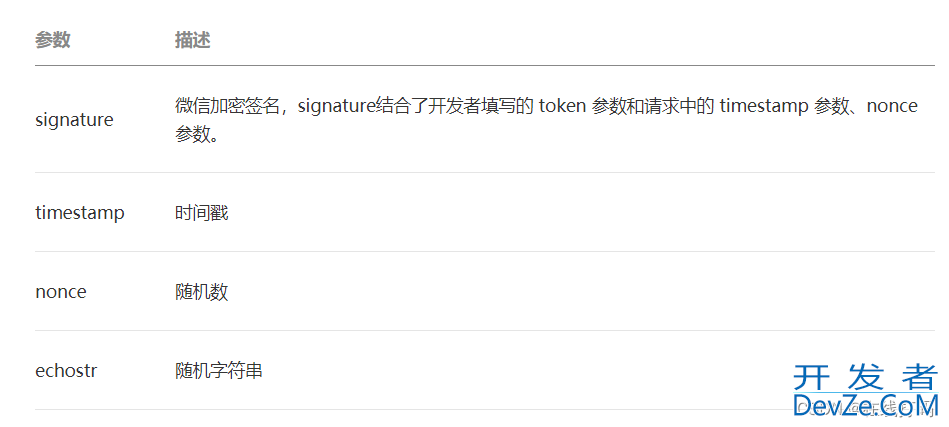
接入概述
开发者通过检验 signature 对请求进行校验(下面有校验方式)。若确认此次 GET 请求来自微信服务器,请原样返回 echostr 参数内容,则接入生效,成为开发者成功,否则接入失败。加密/校验流程如下:
1)将token、timestamp、nonce三个参数进行字典序排序
2)将三个参数字符串拼接成一个字符串进行sha1加密
3)开发者获得加密后的字符串可与 signature 对比,标识该请求来源于微信
公众号配置
// 微信公众号平台配置 const ( appId = "xxxxxxxxxx" // 公众号开发识别码 appSecret = "xxxxxxxxxx" // 公众号开发者密码 encodingAESKey = "xxxxxxxxxx" // 消息加密秘钥 token = "xxxxxxxxxx" // 跟微信公众平台的token一样即可 )
服务android处理代码
当在服务器配置页面点击启用时微信服务器会向配置服务器发送GET请求已验证服务器是否可用func WechatServer(w http.ResponseWriter, req *http.Request) {
defer req.Body.Close()
fmt.Println("服务器请求: ", req) //打印http的请求url
// 1、验证消息是否来自微信服务器
hashcode,signature,echostr := handleValid(req)
if hashcode != signature { // 校验
return
}
// 2、请求处理
if req.Method == "GET" {
_, _ = w.Write([]byte(echostr)) // 验证成功返回echostr
} else if req.Method == "POST" {
handleMsg(w,req)
}else {
_, _ = w.Write([]byte("error"))
}
}
验证代码
以下代码通过加密规则对开发者_Js入门请求参数进行加密,最后返回加密后的hashcodefunc handleValid(r *http.Request) (hashcode string,signature string,echostr string){
//1.尝试获取4个字段
nonce := r.URL.Query().Get("nonce")
timestamp := r.URL.Query().Get("timestamp")
signature = r.URL.Query().Get("signature")
echostr = r.URL.Query().Get("echostr")
//2. 赋值一个token
//3.token,timestamp,nonce按字典排序的字符串list
strs := sort.StringSlice{token, timestamp, nonce} // 使用本地的token生成校验
sort.Strings(strs)
str := ""
for _, s := range strs {
str += s
}
// 4. 哈希算法加密list得到hashcode
h := sha1.New()
h.Write([]byte(str))
hashcode = fmt.Sprintf("%x", h.Sum(nil)) // h.Sum(nil) 做hash
return
}
消息处理
// 处理POST请求
// 微信服务器会将用户发送的数据以POST请求的方式转发给开发者服务器
func handleMsg(rw http.ResponseWriter, req *http.Request) {
wc := wechat.NewWechat()
//这里本地内存保存Access_token,也可选择Redis,memcache或者自定义cache
memory := cache.NewMemory()
cfg := &offConfig.mvYPkLKgRConfig{
AppID: appId,
AppSecret: appSecret,
Token: token,
EncodingAESKey: encodingAESKey,
Cache: memory,
}
// 底层根据AppID和AppSecret获取access_token并保存到cache中
// access_token每两个小时刷新一次
officialAccount := wc.GetOfficialAccount(cfg)
// 传入request和responseWriter
server := officialAccount.GetServer(req, rw)
// 设置接收消息的处理方法
server.SetMessageHandler(controller.HandleMsg)
//处理消息接收以及回复
err := server.Serve()
if err != nil {
fmt.Println(err)
return
}
//发送回复的消息
_ = server.Send()
}
controller.HandleMsg
这里的基本逻辑是根据用户发送消息的类型作不同的处理,目前只处理了文本消息和事件推送消息。当用户发送文本消息时回复用户自己发送的消息// 处理用户发送的消息
func HandleMsg(msg *message.MixMessage) *message.Reply{
fmt.Println("接www.devze.com收用户消息:",msg.Content)
switch msg.MsgType {
case message.MsgTypeText: // 文本消息
return &message.Reply{
MsgType: message.MsgTypeText,
MsgData: message.NewText(msg.Content),
}
case message.MsgTypeEvent: // 事件推送
return service.HandleEventMsg(msg)
default:
return &message.Reply{
MsgType: message.MsgTypeText,
MsgData: message.NewText("感谢关注沐风丶,更多功能正在开发中..."),
}
}
}
service.HandleEventMsg
// 处理事件推送
func HandleEventMsg(msg *message.MixMessage) *message.Reply{
switch msg.Event {
case message.EventSubscribe: // 用户订阅
fmt.Printf("%s 订阅了你 \n",msg.FromUserName)
return &messagejs.Reply{
MsgType: message.MsgTypeText,
MsgData: message.NewText("感谢关注沐风丶,(* ̄︶ ̄)❀你真好看"),
}
case message.EventUnsubscribe: // 用户取消订阅
fmt.Printf("%s 取消了订阅 \n",msg.FromUserName)
return &message.Replyphp{
MsgType: message.MsgTypeText,
MsgData: message.NewText(""),
}
default:
return &message.Reply{
MsgType: message.MsgTypeText,
MsgData: message.NewText("default"),
}
}
}
三、测试
1、启动项目
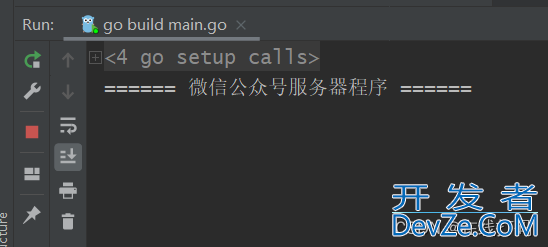
2、启动服务器配置

启动成功后服务器响应

3、用户关注公众号
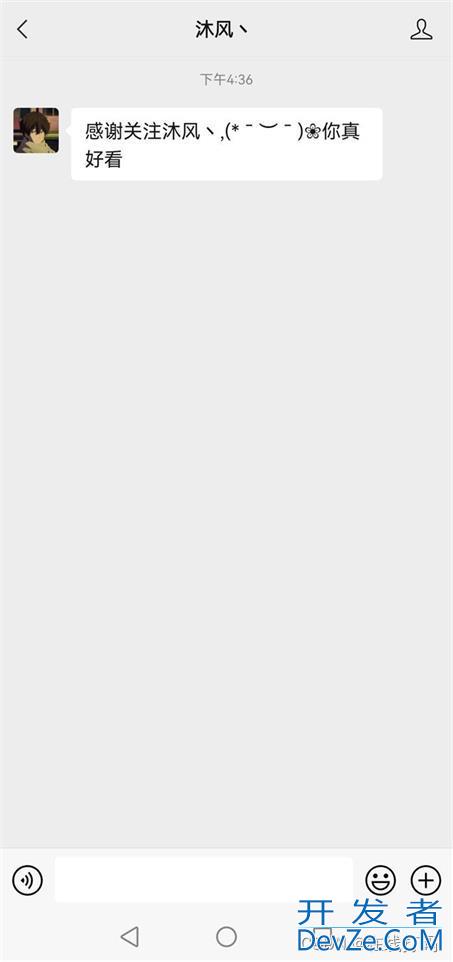
服务器响应

4、用户发送消息
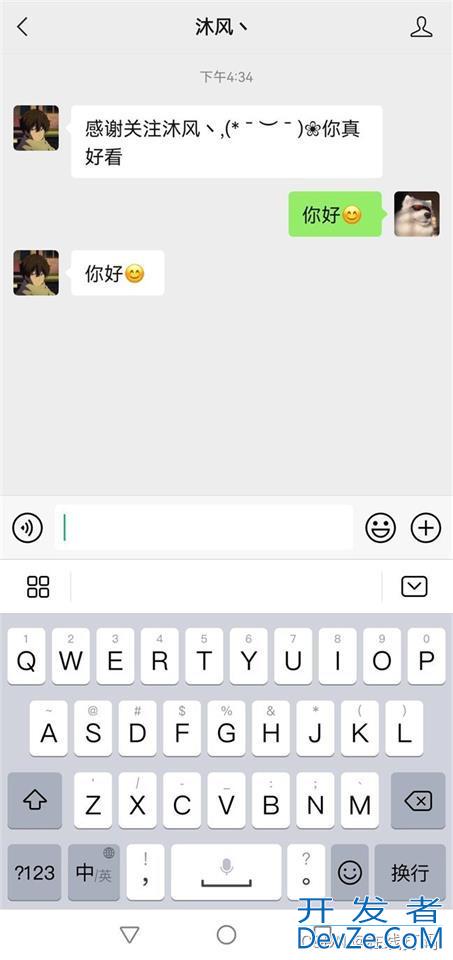
服务器响应

5、用户取消订阅

服务器响应

四、总结
更多文档:开发文档
个人订阅号无法进行微信认证,许多接口都没有权限,推荐使用个人页UI管理公众号到此这篇关于Golang实现微信公众号后台接入的示例代码的文章就介绍到这了,更多相关Golang微信公众号后台内容请搜索我们以前的文章或继续浏览下面的相关文章希望大家以后多多支持我们!
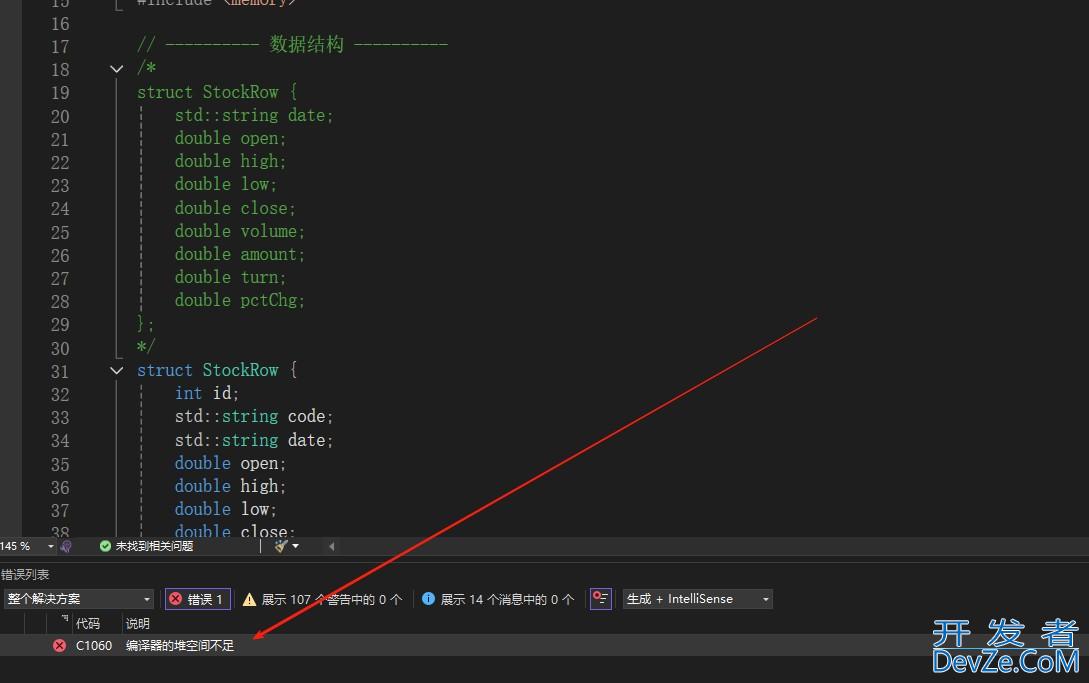





 加载中,请稍侯......
加载中,请稍侯......
精彩评论